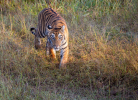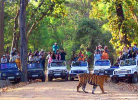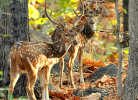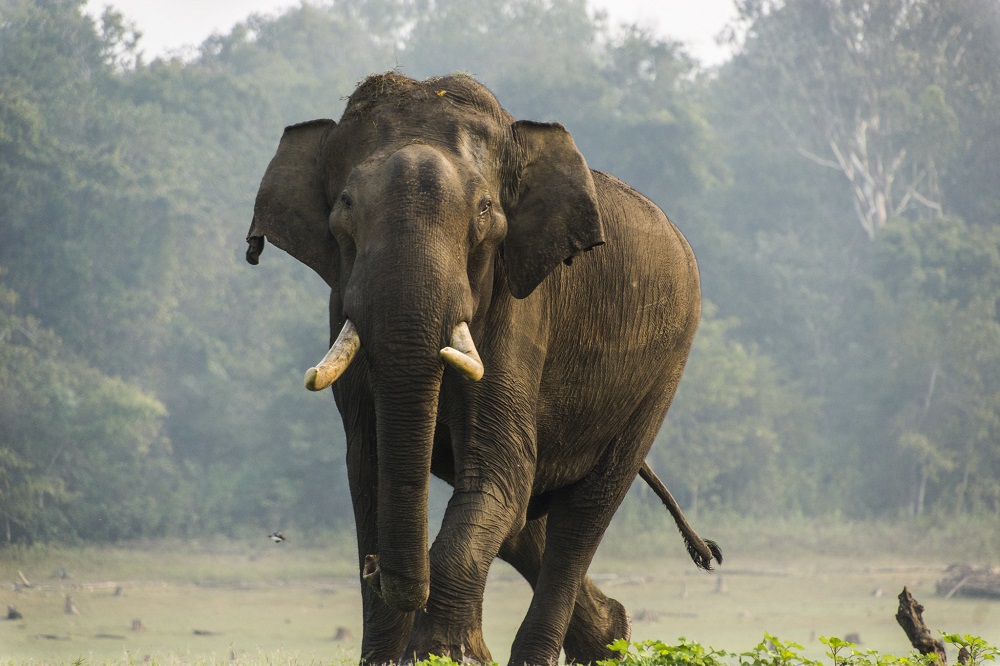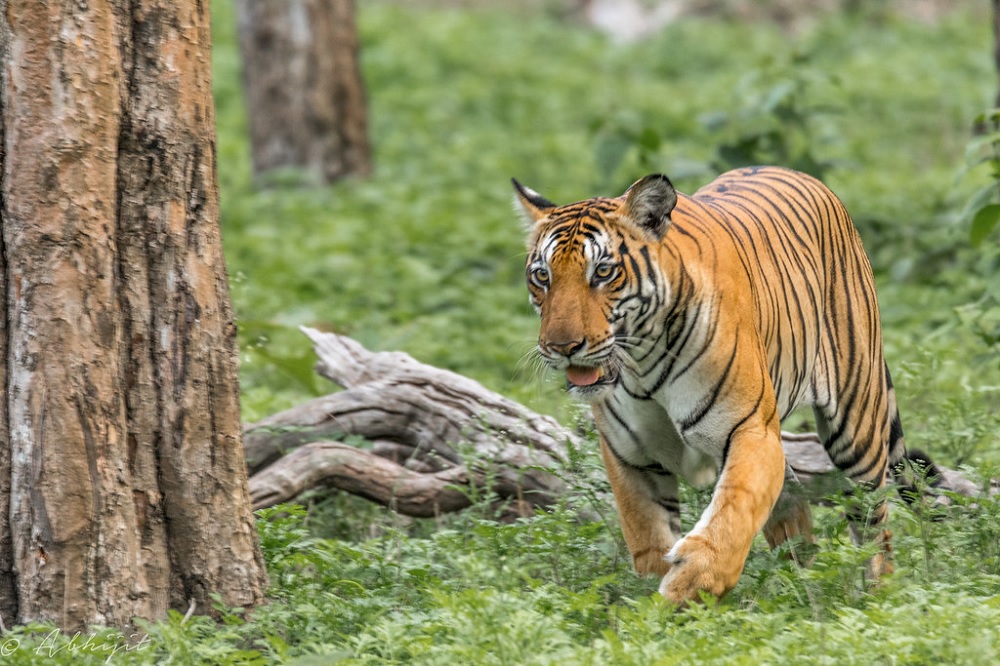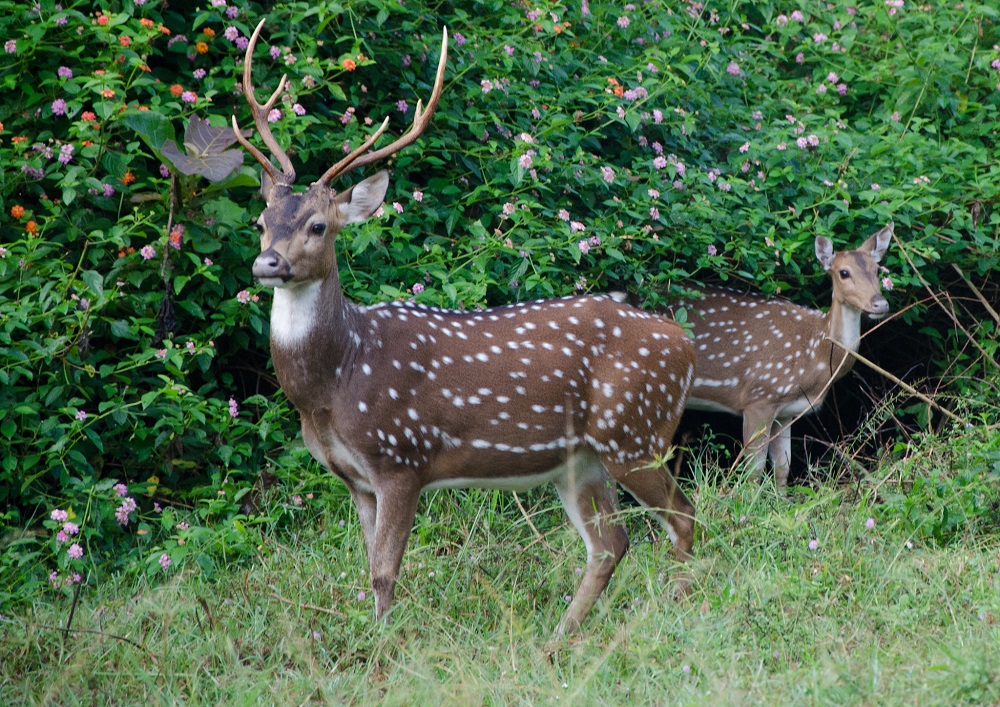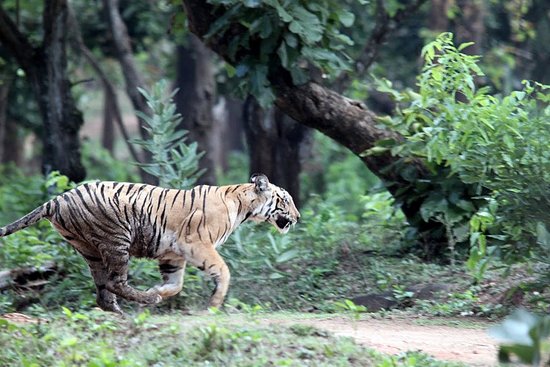Nagarhole National Park Tours
Nagarhole is a famous national park found in Kodagu district and Mysore of Karnataka. This park is also called the Rajiv Gandhi National Park and is located 94 km away from Mysore and Madikeri. This park is famous among tourists for safari, jeep drive, coracle ride, wildlife sightseeing, photography, and others.
Starting from the Western Ghats to the Brahmagiri Hills, this park covers some of the lush regions of the land. Kabini Reservoir, which separates the park, is flourishing the land with moist deciduous forest, dry deciduous forest, swamp forests, and others. Apart from safari, these landscapes provide numerous attractions like Lakshmana Tirtha River, Iruppu Falls, Rameshwara Temple, and others.
About Nagarhole
Nagarhole is the 37th tiger reserve under the Project Tiger initiative. This national park is a part of the large Nilgiri Biosphere Reserve. This heritage site has rich cover of forest, which is home to small hills, waterfalls, valleys, streams, temples, and others. The main interesting element of this park is its flora. Most of the flora of this region is commercial goods like, rosewood, silver oak, sandalwood, teak, and others.
The tourism in this park depends on the diversity of the fauna. The park is home of many indigenous animal species like Indian leopard, Bengal tiger, sloth bear, striped hyena, barking deer, Indian elephant, wild boar, four-horned antelope, gaur, leopard cat, Indian giant squirrel, pangolin, golden jackal, civet, and others.
Although a tiger reserve, the place is more famous for wild boar and elephants. When it comes to birds, this place holds more than 270 species of woodland birds and waterfowls. Top species to spot here are blue bearded bee-eater, ducks, osprey, Malabar whistling thrush, Nilgiri wood-pigeon, blue-winged parakeet, Malabar grey hornbill, and others.
The park is not just a jungle for animals. It stays as an economic element for Jenu Kuruba tribe. They have immense knowledge about the animals and the forest landscape. They survive by collecting honey, root, wax, tubers, and others.
Nagarhole has a pleasing Western Ghats climate throughout the year. The summers are warm and humid, winters are cold and the monsoon is heavy. Thus, it is best to avoid monsoon season. Although the park is open from Jan to Dec, the best time to visit the park is during April and May.
There is a small elephant camp inside the national park for those who love to bathe, play, and feed the elephants. If you wish to make a complete vacation out of Nagarhole, cover this park along with Coorg. The nearest railway station to this park is located in Mysore. However, you can find buses and cabs from numerous destinations in Karnataka to this park.
History of Nagarhole
Naga means snake and hole means streams. This park gets its name from the winding streams, which run through the park. Do you know that the park has 47 seasonal streams flowing through it? Once, this park was a hunting reserve, which was exclusively used by Wodeyar Dynasty's royal families. This family ruled the Mysore Kingdom in the past.
In 1955, this park became a wildlife sanctuary by joining some of the forest regions closer to it like Hatgat, Nalkeriin Kodagu, and Arkeri. During which, the park measured just 258 square kilometer.
Later, other adjoining forest areas were added to the sanctuary.When the park was named as a national park in 1988, it grew into 643.39 square km region. In 1992, it was renamed as Rajiv Gandhi National Park, in honor of the former PM Rajiv Gandhi. However, the locals still call it by its original name, Nagarhole. In 1998, the park was tagged as Nagarhole Game Reserve. In 1999, it became a tiger reserve.


